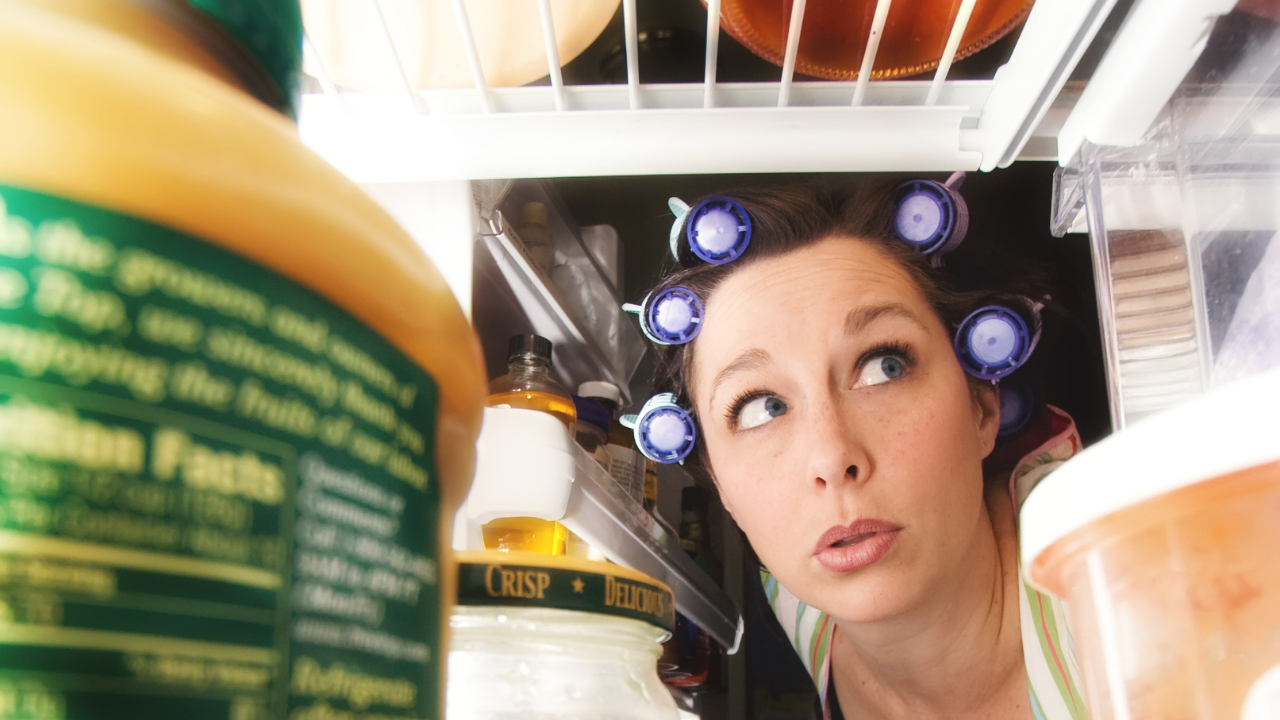How to Stop Body Checking
Do you stare at yourself in store windows when walking down the street? Do you weigh yourself every day? Do you have “progress photos” in your phone’s cameral roll? These are all examples of body checking, which can be detrimental to your mental health and body image and prevent you from disordered eating recovery.
If you’re new here, hello and welcome! My name is Hannah and I am a non-diet dietitian here to help you improve your relationship with your body and finally find food freedom.
In this blog we will cover:
What is body checking?
Why do we body check?
Why is body checking problematic?
How to stop body checking
What is body checking?
Body checking is when you routinely “check” your body, often to see how it has changed. Body checking involves compulsive monitoring, scrutinizing, and/or tracking your body’s shape, size, or weight.
You might notice that you tend to focus on a certain part of the body and always “check” your butt, arms, belly, etc.
Forms of body checking
Excessively weighing yourself
Measuring body parts
Touching/pinching/grabbing parts of your body to ensure that they haven’t changed since last time you “checked”
Putting on a pair of pants or a top to see how it fits compared to last time you wore it
Staring at a certain part of your body when you walk by a store window, mirror, or other reflective surface
Taking “progress photos”
Obsessing over past or current photos of yourself
Continuously asking others for reassurance of how you look
Comparing your body to other peoples’ bodies or images/videos you see online
Body checking on social media
Body checking behaviors are very commonly seen on social media, especially in the infamous “what I eat in a day” videos. In such videos, the creator will show a clip of their body before they show the food that they allegedly ate that day. The issue with this is that the body check insinuates to the viewer that if they eat like the creator, then they will look like the creator. But like I always say, even if we all ate the exact same, we would still look completely different.
The body checking and “what I eat in a day“ duo is also frequently accompanied by talk about weight loss, calories, and serving sizes. While the creators that post this type of content are likely not trying to cause harm, these videos can lead to those with an eating disorder (or those at risk of developing one) comparing their body and food choices, making recovery nearly impossible.
Other examples of body checking on social media include a creator standing in front of the camera and pulling up shirt for no reason or a creator flexing their muscles (arms, legs, abs) as the main purpose of the video. “Transformation Tuesday” and “before and after” content are another example. These types of videos and photos are often posted by users who are aiming to get customers to purchase their weight loss meal plan, supplements, etc., again insinuating the idea of “if you eat like me, you will look like me”.
Social media’s most admirable yet detrimental trait is that anyone can post whatever they want. Sure, there are community guidelines on most platforms, but there are ways around these rules. The algorithms cannot possibly filter out every possible harmful piece of content that is posted. And unfortunately, much of the nutrition and health information on the internet is misinformed and promotes disordered eating habits.
Why do we body check?
Body checking is often done in desire to feel “in control” of your body. You might body check to make sure that you are “staying on track” with your diet or exercise regiment. Body checking often happens in attempt to make yourself feel better but end up feeling worse.
Why body checking is problematic
You might be thinking, “what’s the big deal? I’m just looking at my body in a mirror”. Body checking may seem innocent, but it is one of the biggest barriers holding people back from eating disorder recovery.
When a “check” doesn’t go well and we dislike how our body looks or feels, this can lead to thoughts and feelings of shame, guilt, and anxiety. These feelings reinforce the idea that there is something “wrong” with us and we aren’t doing enough to care for ourselves. You might think “I am not eating healthy enough” or “I am not doing enough exercise”. These thoughts can quickly spiral into rigid “clean eating” and obsessive exercise habits.
Body dysmorphia (sometimes referred to as body dysmorphic disorder) frequently accompanies body checking and involves obsessive focus on a perceived flaw in your appearance. A person with body dysmorphia might spend great amounts of time thinking about a “flaw” and trying to fix it, even if the “flaw” is small or imagined. “Bigorexia” is a common form of body dysmorphic disorder.
How to stop body checking
It is important to stop body checking in its tracks for full eating disorder recovery. Let’s discuss a few tips to reduce body checking behaviors.
Identify the type of body checking that you are doing
In order to stop body checking, you need to identify the behaviors that are happening. It usually happens subconsciously. Ask yourself why you tend to engage in that behavior. What are you getting out of it? If you take progress pictures, for example, you might do so because it relieves anxiety about not knowing what your body looks like. Taking and looking at these pictures may also provide a sense of satisfaction if you engaged in disordered eating behaviors.
Consider if this behavior serves you long term. Do you really feel better looking at the progress pictures? Or are they standing in the way of recovering from your disordered eating and exercise habits?
Once you have identified the body checking that you typically do, try to disengage from the behavior and actively choose to stop doing it. Make a choice not to engage. This might look like:
Deleting the progress photos
Looking away from the mirror
Getting rid of your scale or measuring tape
Gently telling yourself to stop grabbing your thighs or pinching your belly
Take note of how often you are body checking
Make a mental note or write in your journal every time you body check. You will likely be surprised at how often you are doing it.
Get rid of tools that enable body checking behaviors
If you are working with an eating disorder treatment team, your therapist and registered dietitian can help you to develop strategies and identify tools to help you stop body checking in a manner that will not be overwhelming. For example, it may feel too scary to get rid of your scale cold turkey. Plus, this might lead to even more restrictive eating habits to “ensure” that you aren’t gaining weight.
That said, it will be important to part ways with the dieter’s tools that enable body checking. These might include:
The scale
Measuring tapes
Body fat percentage calculators
Clothes that no longer fit
Records of previous weights
Triggering photos of your body
Detox your social media
As mentioned, social media can increase the risk of disordered eating behaviors. Unfollow anyone that you have followed as “body goals” and anyone that posts “before and after” photos. Here are some more criteria for your social media detox:
Accounts that make you feel bad about your life or your body
Accounts that try to motivate you to change something about the way that you look (this definitely includes weight loss)
Accounts that promote restricting the foods that you eat
Accounts that compare or scrutinize bodies (ex: side by side comparison posts)
Accounts that promote exercise as a means to change the way your body looks rather than focusing on how it feels or other health benefits
Accounts that fail to represent individuals of different shapes, ages, and ethnicities
Shift to body neutrality
Body neutrality involves caring for and respecting your body, regardless of what it looks like. This means that even on bad body image days, you still nourish your body, engage in joyful movement or take rest, and speak kindly to yourself.
Instead of focusing on what your body looks like, remind yourself what it can do. Your body is capable of so much - your legs allow you to walk your dog and go on bike rides. Your arms help you to hold your kiddos and carry your groceries, even if you think that they are “too big”.
The fact of the matter is that you are more than your body. And the way that your body looks is the least interesting thing about you. It is possible to spend less time worrying about what your body looks like, even if you have spend your entire life up to this point being told that your body is not enough.
Bottom line
Body checking is a behavior commonly seen in those struggling with an eating disorder or disordered eating and exercise habits. Body checking can lead to feelings of guilt, shame, and anxiety. You can stop body checking by identifying the behavior, disengaging from it, and ditching the tools that enable body checking.
If you are looking for more support on your journey of improving your relationship with food, we’d love to guide you inside The Nutrition Reboot Membership, my signature intuitive eating program.
Learn more
Blog: How to Request Not to be Weighed at the Doctor’s Office
Blog: What is HAES? Health at Every Size Explained by a Dietitian
Featured podcast episode
Want more help on your intuitive eating journey?
Join my membership to become part of a community of ex-dieters working towards food freedom and making peace with food so they no longer need to cut out their favorite foods.

































